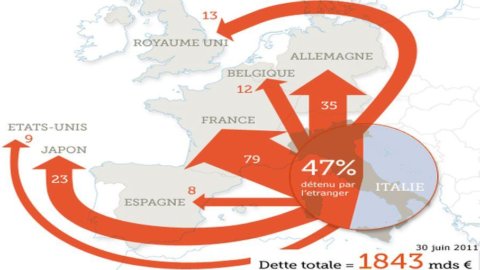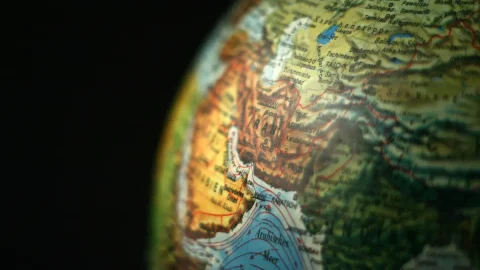Once upon a time there were the rich and the poor. The advanced countries and those others, which at the time were not even called, as now, "emerging", but “developing” or even “third world”. The latter were still the students, often rejected and deferred, of the "professors" of the world economy.
In 1991, according to IMF and Eurostat data, developing countries were heavily indebted and subjected to the sermons of the powerful, who wanted to educate them through the appropriate institutions: the World Bank and the International Monetary Fund.
For almost 20 years this situation has remained the same, except for progressively changing and suddenly reversing in the last 3 years, since when the financial crisis has overwhelmed the economic systems of Europe and the United States.
Now, the pupils have surpassed the teachers, and the Western powers succumb to the nouveau riche, China and Brazil in the lead. According to a study by the Moody's rating agency, the average public debt of Western countries is 70% of GDP, while that of the BRICS is only 45%. Even in the last three years, in the euro area alone the percentage rose from 66% on average to 85%, with already three countries (Ireland, Portugal and Greece) having had to resort to international aid.
Going to look at the history of the last 20 years, we notice how countries that were dramatically indebted, like the Russia of 2000 (100%) and theArgentina 2003 (139%), have now clearly recovered: in 2009 Russia had even dropped to 8%, with 2011 forecasts at 11%, while Argentina is now steadily below 50%. Indonesia itself has gone from 95 to 27% of the public debt/GDP ratio in ten years.
Conversely, the situation in Western countries has continued to worsen. In 1991 US public debt was 68%, today it has reached 100%, with a figure of around 14.600 trillion dollars. Twenty years ago, the debt of France, the United Kingdom and Germany was contained between 30 and 40%, now the major European powers (even if the British are not part of the euro) steadily exceed 80%. Already in 91 the Italian debt was close to 100% in relation to GDP, but now it exceeds 120%.
The years from 2003 to 2008 were decisive. There are three main factors behind this trend reversal: the first is that the emerging tightened their financial discipline around the 2000s, just following the advice of the IMF. Then, they took advantage of a much higher growth rate than that of other countries, which helped to reduce debt. Plus they have benefited, in particular the states of Africa, from the cancellation of the debt by the IMF and the World Bank.
Conversely, the West has not grown or been too attentive to its budget. Most of the nations in question began their own crisis process well before 2008, only to see it then definitively precipitate.
According to an estimate by American analysts Carmen Reinhart and Kenneth Rogoff, it takes on average 7 to 10 years for a country to restore its accounts. So for the ex-rich it promises to be a painful decade, which could see the end only in 2017.
According to the most recent data, the most indebted country in the world is Japan (230%) ahead of Greece (152%). Italy occupies the sixth position (120%), the USA the ninth (100%), France the fourteenth (87%).
However, it is also interesting to understand how these dynamics intertwine, in the sense that a large part of a country's debt is held by others, through government bonds purchased by foreign banks.
It is therefore no coincidence that Obama, for example, hastens to call Merkel to ask her to resolve the Greek crisis, given that quite a few US banks are creditors of Athens. Or for example that some BRICS, especially China, are willing to shell out hundreds of millions of euros to help Europe get out of the crisis. Perhaps to save not too much indirectly themselves and their investments.
The problem of understanding who is most exposed and for what figures is often difficult, since these data are not mandatory. The BIS (Bank for International Settlements) has published only a few. From these it can be seen, for example, that China has nearly 3.200 trillion investment in foreign public debt. It is not known exactly where, but US Treasury statistics show that 1.200 are placed in the United States alone, while around 700 million in the Eurozone.
Or again it emerges that the UK is the third largest holder of US debt, which in turn is a major creditor to Japan, while Spain has invested in Brazil, and France and Germany on Italy.
In total according to data updated to December 2010, the total debt held by foreign banks is 200 billion dollars, and the bulk of the game is played in the Wall Street, London, Beijing triangle.
And theItaly? In the last year, Italy has seen its share of public debt in foreign hands go from 53 to 47%. According to the recently updated data (as of June 30, 2011), the total debt is 1843 billion euros. The main creditors are France with 80 billion and Germany with 35, while the US has bet on Italian securities for only 9 billion.
See analysis and chart on Le Figaro





